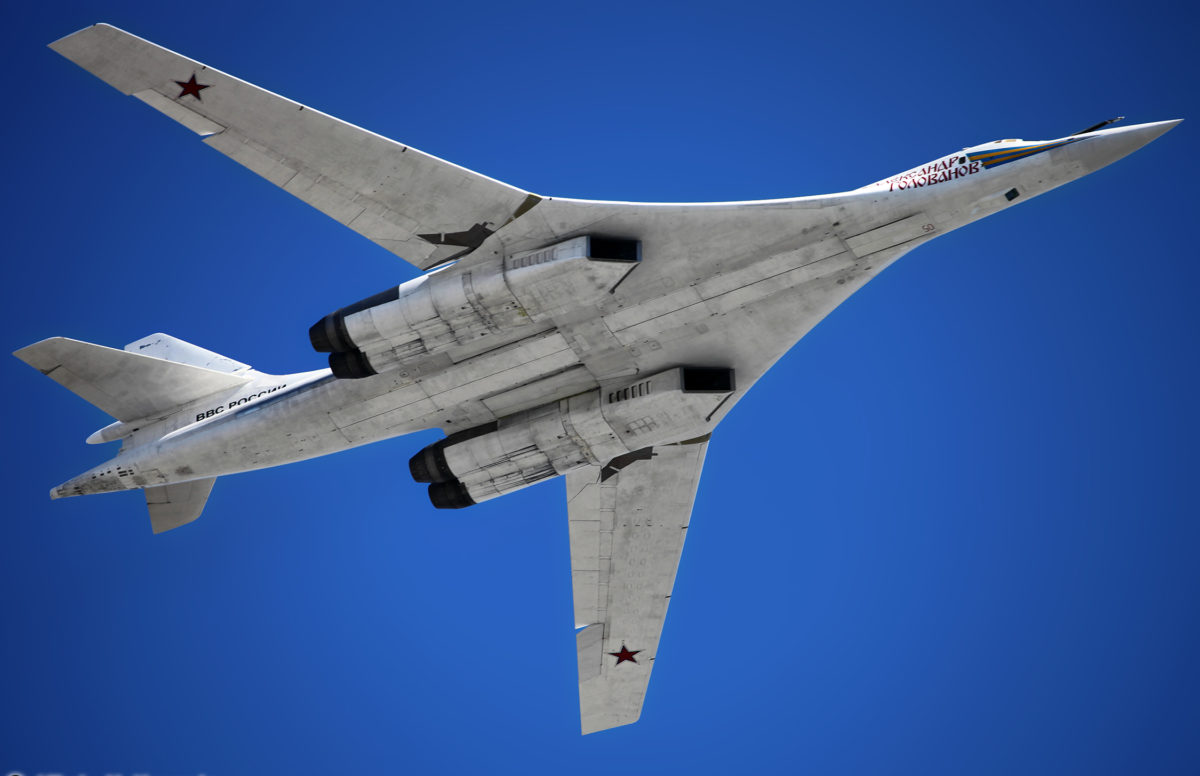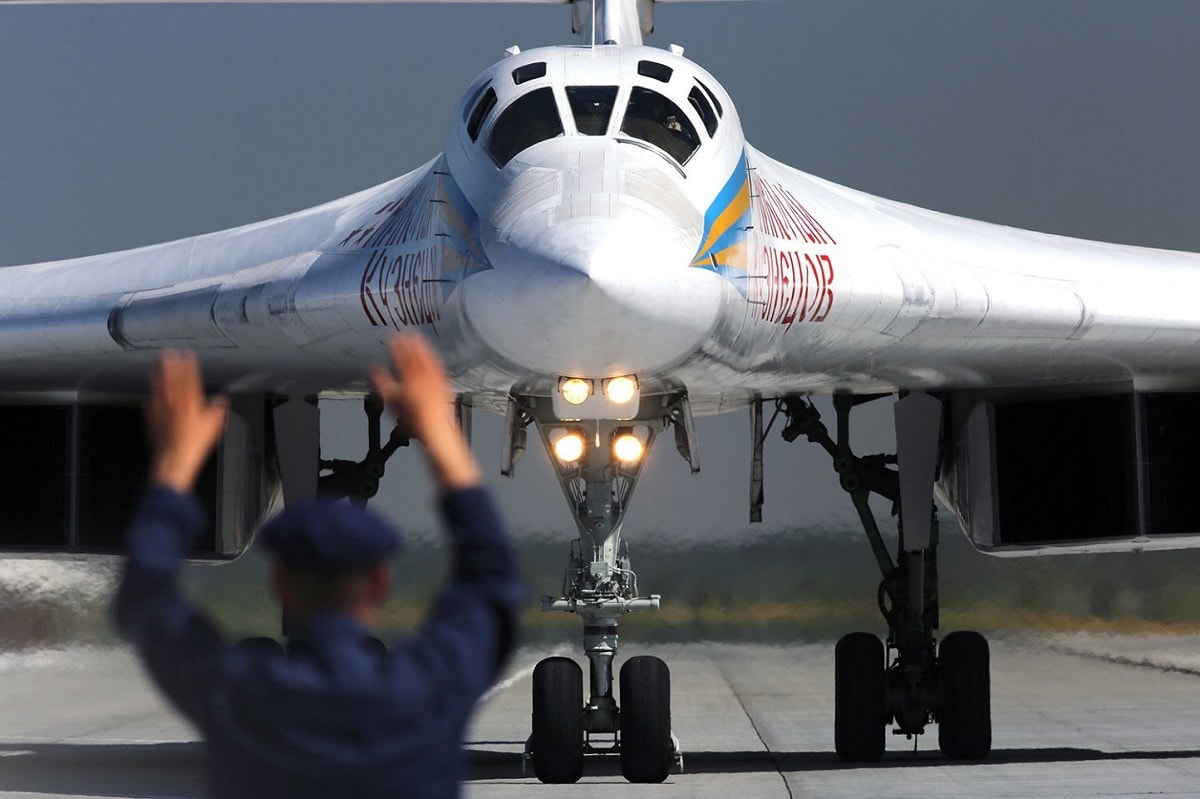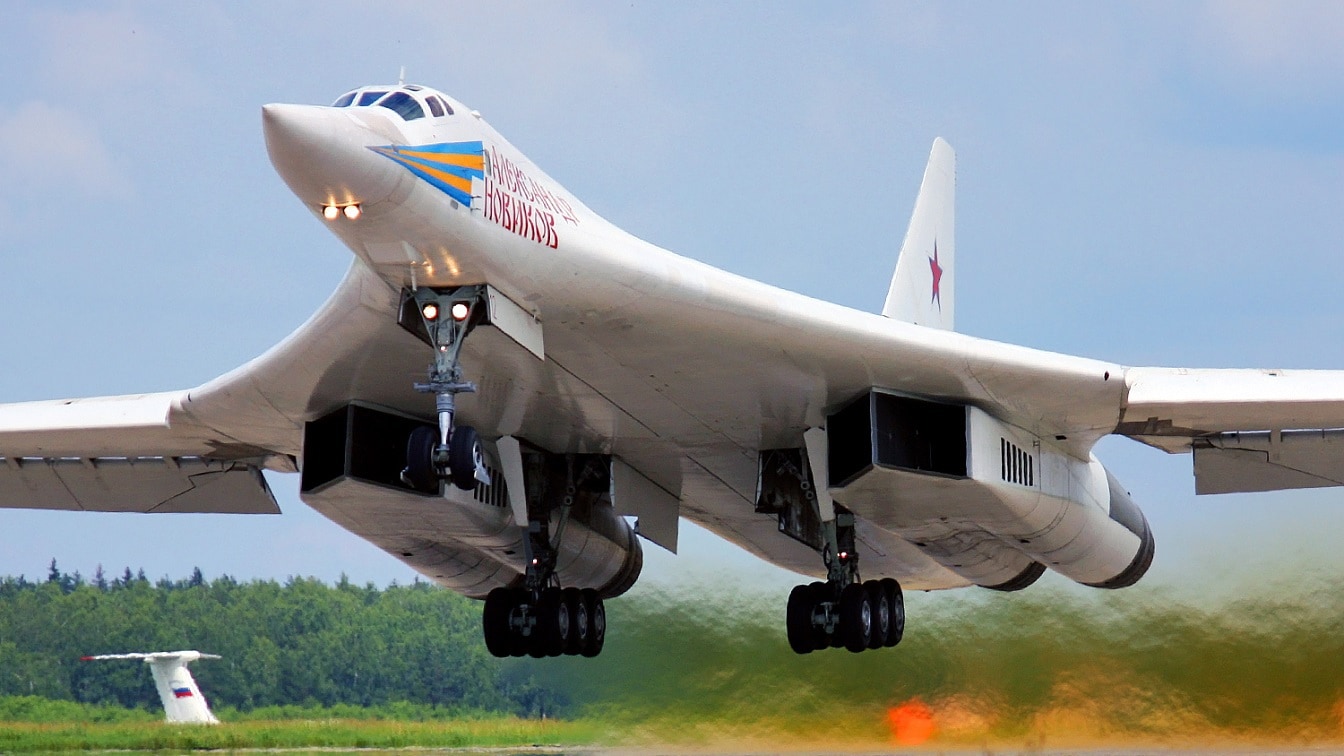Russia’s Tu-160 Bomber: Just How Capable Is It? A tricky challenge in defense analysis is grasping a potential adversary’s own perceptions of military capabilities and limitations. It’s hard not to project beliefs and assumptions from one’s own strategic culture onto another country’s. That can also lead one to inflate or misinterpret the effectiveness and purpose of foreign military systems already veiled in secrecy and propaganda.
For that reason, a 2018 article published in a Russian military industry journal criticizing the viability of Russia’s Tu-160 ‘Blackjack’ strategic nuclear bomber makes for interesting reading, revealing an authentically Russian perspective on the challenges facing a key component of Moscow’s airborne nuclear deterrence.
The author, Andrey Gorbachevskiy, who also posted a follow-up article replying to criticisms of his argument, is a radar specialist with experience managing the development of air-defense technology going back to the 1980s.
His take shouldn’t be taken as the final word on the Tu-160 Blackjack’s effectiveness—after all, even highly informed defense experts disagree all the time on the utility of various technologies and tactics. Nonetheless, his piece opens a window to internal debates regarding Russia’s nuclear deterrence priorities and offers insight as to how North America’s air defenses appear from the attacker’s perspective.
Is the Tu-160 Blackjack an Expensive Dinosaur?
As profiled in greater detail here in 1945, the Tupolev Tu-160 (codenamed ‘Blackjack by NATO) is a huge swing-wing bomber capable of surging to up to twice the speed of sound, and traversing huge distances across the globe cruising at subsonic speeds. The Blackjack entered service in the closing years of the Cold War, and Russia has invested considerable resources in rebuilding its small fleet presently counting 16 or 17 flyable aircraft.
The Tu-160’s primary mission was, and remains, to lob long-range nuclear-armed cruise missiles, at high-value targets in the United States, providing a global “second strike” capability in case Russia’s land-based nuclear forces are largely destroyed by an adversary’s first strike. Secondarily, Tu-160s could assail U.S. Navy carrier task forces.
Gorbachevskiy’s article was in response to Moscow’s announced plans to spend the equivalent of over $2.1 billion assembling 10 additional modernized Tu-160M2 bombers, with total production supposedly aimed at 50 additional aircraft. He believes this is a fool’s errand, especially once high lifetime operating costs are factored in.
Due to its radar cross-section of 10-15 square meters, he warns “…even with the presence of electronic warfare systems, it won’t be possible to hide such a conspicuous target as the Tu-160 in the future.”
Though the Tu-160M2 model is receiving a modernized electronic warfare system, Gorbachevskiy estimates it would have to be ten times more powerful than its current 1980s-era Baikal jammer to be effective against contemporary jam-resistant Active Electronically Scanned Array (AESA) radars on U.S. fighters. That amount of power would necessitate increased electrical generation and weight.
He compares the Tu-160 unfavorably to the similar but smaller U.S. B-1B Lancer bomber, arguing the Soviet design’s much faster supersonic sprint is a poor tradeoff for the latter’s smaller radar cross-section (RCS), which also requires a less powerful electronic warfare system for self-defense.

Tu-160 Bomber. This file comes from http://vitalykuzmin.net

Tu-160. Image: Creative Commons.
“Any strategic bomber flies the vast majority of the route at subsonic speed, at altitudes of about 10 kilometers [32,800 feet]. Flight at maximum speed [Mach 2.05] of the Tu-160 can be used only at around 1% of the total length of transit. Consequently, the maximum speed mode can only be used for a single separation from pursuing enemy fighters.”
Apocalypse via the Arctic
Which approach would Russian mission planners assign to Tu-160s for nuclear strikes? In Gorbachevskiy’s evaluation, flying westward over the Atlantic is impractical due to a combination of NATO air defense surveillance and balloon radars overlooking the U.S. coastline. A Pacific approach would be hampered by limited basing options, and too many American bases close to the points of departure.
Conventional strikes over Europe would also be impractical in Gorbachevskiy’s view: “The density of NATO radars and fighters is so high that the Tu-160 can penetrate the area only under the cover of a large number of its own fighters and then only where there are no long-range air defense systems.”
That leaves a trajectory over the Arctic Circle as the most viable path—at least until the bomber approaches a chain of long- and medium-range surveillance radars stretching 2,300 miles between Alaska and Labrador, Canada. Though Gorbachevskiy describes the chain as the DEW Line (for Distant Early Warning), it’s been designated the North Warning System (NWS) after receiving an upgrade in 1985-1993.

The North Warning System as part of NORAD radar array as envisioned by Canada and the US in 1987.
The NWS consists of fifteen powerful AN/FPS-117 phased-array radars with a range of 287 miles and a maximum altitude of 100,000 feet, and 39 AN/FPS-124 radars with a range of 70 miles and maximum altitude of 49,000 feet used to fill in the gaps between the AN/FPS-117s.
Gorbachevskiy writes: “It’s impossible for the Tu-160 to overcome this line unnoticed either at a high or low altitude. If you destroy several radars of the DEW Line and penetrate via the resulting gap, the attacker will be quickly intercepted by fighters from the internal airfields of Canada. A similar result will occur attempting to suppress the radars using electronic warfare systems. Consequently, the Tu-160 should launch its cruise missiles 100-400 kilometers before the DEW Line and return to base unnoticed.”
Washington, DC lies about 4,000 kilometers (nearly 2,500 miles) away from the NWS. Does the 5,000-kilometer (3,100 miles) range of the Kh-102 cruise missile thereby solve the Tu-160’s detection problems?
Not entirely according to Gorbachevskiy. True, the Kh-102 surface-skimming cruise missiles have a radar cross-section measured in the hundredths of a square meter, meaning land-based radars may only detect them 20-40 kilometers away. But that may be enough.
“Let’s assume that using terrain [to obstruct radar detection] most of the cruise missiles will slip through the DEW Line. However, it’s enough for just one or two missiles to be detected to cause AWACS aircraft to takeoff. The airborne surveillance aircraft will then begin vectoring fighters in to detect the remaining missiles. Additionally, the cruise missiles will have to overcome additional central and southern line of early-warning radars.”
Able to scan for low-flying cruise missiles from above, the E-3 Sentry AWACS aircraft could detect cruise missiles out to 100 kilometers (62 miles) away according to Gorbachevskiy.
Furthermore, E-3 could coordinate U.S. air defense fighters including F-16C/Ds upgraded with APG-83 SABR radars with improved cruise-missile detection capability, and F-15C/F-15EXs with even more powerful APG-63(V)3 AESA radars that can detect bombers up to 400 kilometers (248 miles) away. Gorbachevskiy estimates it would require “only five pairs of F-15Cs” to cover Canada’s northern border.
He concludes: “When approaching the territory of the United States, additional AWACS will take off, and remaining cruise missiles that broke through the northern line of defense will be intercepted near the US borders. As a result, only a minority of the missiles will reach the target. Thus, nuclear strikes using cruise missiles are ineffective due to the heavy losses sustained enroute to target.”
Rather Russia’s ICBM missiles offer a superior nuclear strike option, as the U.S.’s limited capacity missile defense system might only succeed in shooting down five or six in his estimation.
However, many U.S. sources are less confident that cruise missiles could be intercepted so efficiently. It’s also worth pointing out that the U.S. Air Force is satisfied deploying even less stealthy B-52 bombers with AGM-86B nuclear-armed cruise missiles with a range of “only” 1,500 miles (2,400 km)—seemingly confident that’s enough range for a survivable standoff attack. And that despite Russia’s far more extensive land-based air defense missiles and ultra-fast MiG-31 interceptors.
But geography and capability likely explain the confidence. First, the NWS radars stretching across Alaska and Canada serve as a geographic buffer against attacks on U.S. soil, compelling Russian bombers to release weapons from further away. Furthermore, the U.S. Air Force may trust it can maintain air superiority and screen its non-stealth bombers from attack, at least while outside the range of Russian ground-based air defenses. Finally, the U.S. is also developing a nuclear-armed stealth cruise missile called the LRSO to better elude Russian air defenses.
Taking on carriers
The Tu-160 has a secondary mission as a long-range maritime strike platform carrying up to 24 Kh-15 anti-ship ballistic missiles with a range of 187 miles that plunge down towards targets at Mach 5. However, Gorbachevskiy assumes the use of slower, surface-skimming anti-ship cruise missiles, not Kh-15s, which might mean the Soviet-era weapon has been retired.
Again, he doesn’t rate the Tu-160’s odds highly in a contest with a U.S. carrier task force due to the latter’s multi-layered air defenses, including Super Hornet fighters, E-2D Hawkeye airborne-early warning aircraft, and escorting Arleigh Burke-class destroyers disposing of dozens of air-to-air missiles and powerful radars that can draw fire away from the carrier.
Thanks to the Hawkeye aircraft’s forward presence, he estimates an approaching Tu-160 might be detected 800 kilometers (~500 miles) away from a carrier, while the Tu-160 would only detect the carrier from 400 kilometers (~250 miles) away—within interception range of Super Hornet fighters on Combat Air Patrol (CAP).
Even in the absence of a CAP, he believes electronic warfare from a carrier’s escorting destroyers would force a Tu-160 to approach much closer than its maximum attack range to obtain a viable target lock, and that a moving carrier may move outside the ‘kill box’ of a missile seeker by the time it has reached a carrier’s position anyway.
Gorbachevskiy doesn’t think upgrades will significantly improve Tu-160M2 survivability, as they wouldn’t include radical changes to the non-stealthy geometry of its airframe and engine intakes, and that plans to apply some radar-absorbent materials won’t reduce radar cross section nearly enough.
In his rebuttal article, he concludes Russia should either fully develop a stealth bomber (the PAK-DA program) or retire its strategic bombers. Of the new Tu-160, he concludes “Thus, airplanes that are able to participate only in the Third World War will be built instead of the ships we need both in peacetime and in local wars.”
Sébastien Roblin writes on the technical, historical, and political aspects of international security and conflict for publications including the 19FortyFive, The National Interest, NBC News, Forbes.com, and War is Boring. He holds a Master’s degree from Georgetown University and served with the Peace Corps in China. You can follow his articles on Twitter.

